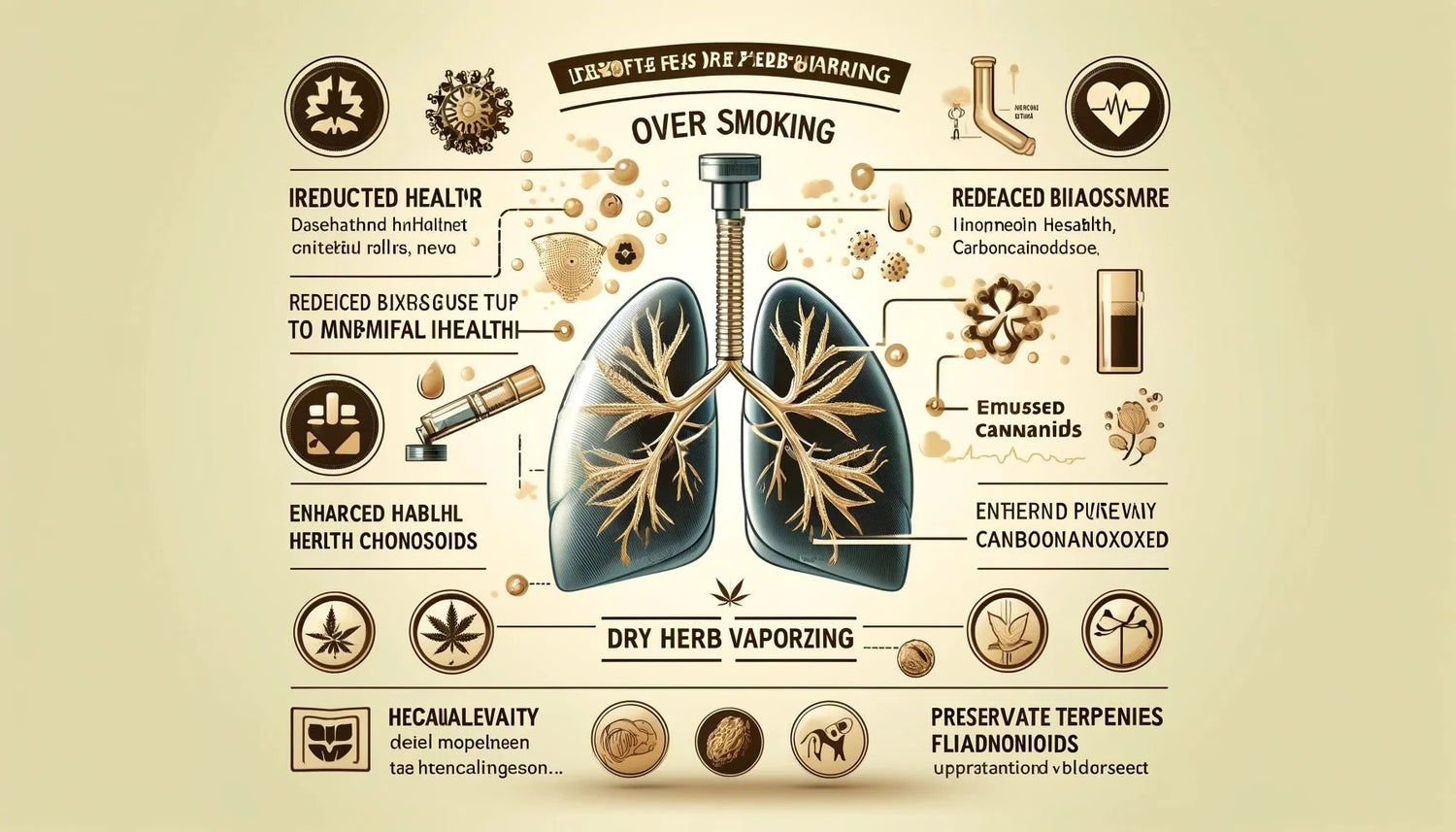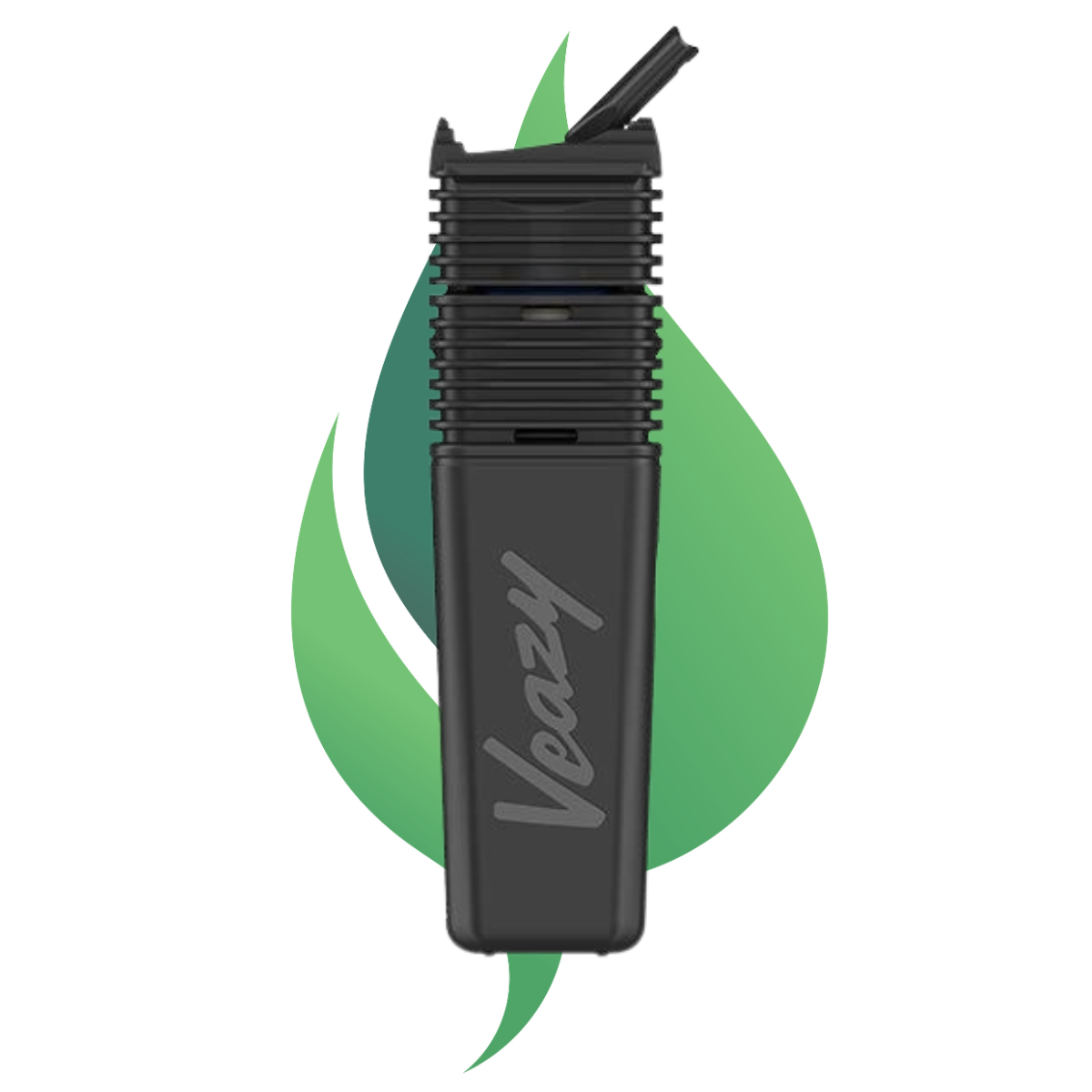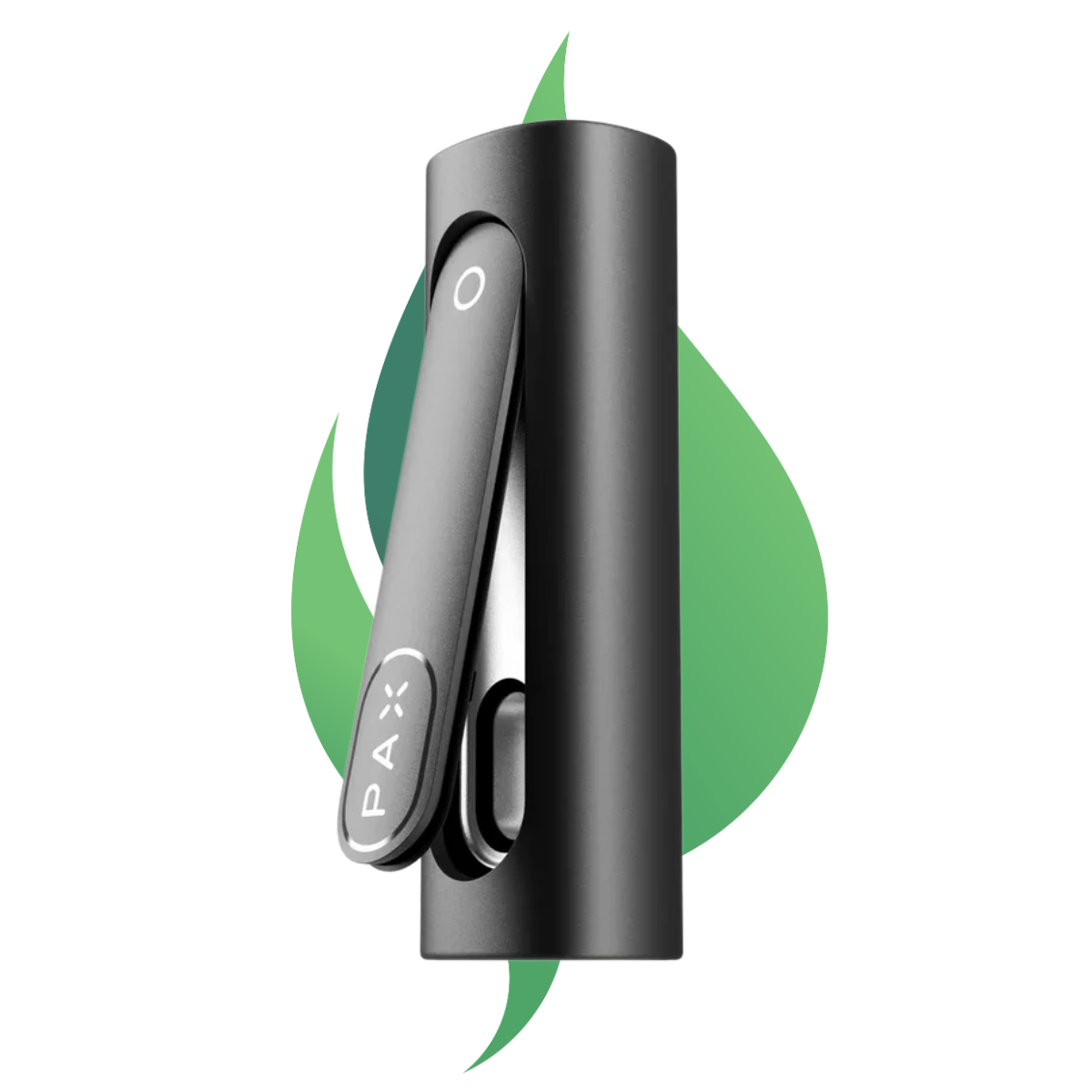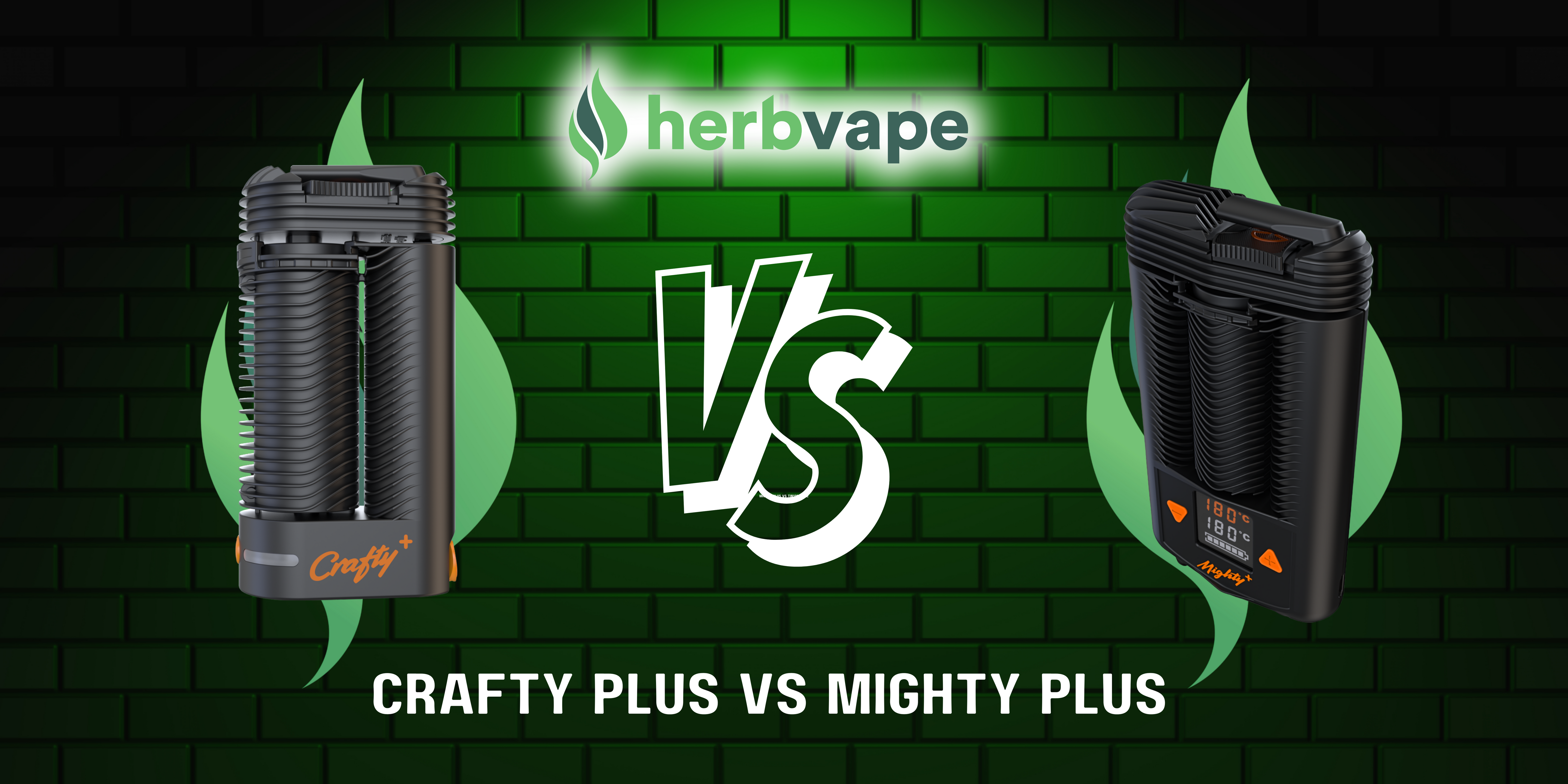Abstract
Dry herb vaporizing has emerged as a scientifically-supported alternative to smoking, particularly for individuals consuming medicinal and recreational cannabis. This comprehensive review examines current scientific evidence supporting the benefits of dry herb vaporizing over smoking, with expanded focus on health impacts, cannabinoid pharmacokinetics, efficiency metrics, environmental considerations, and long-term user outcomes. By analyzing peer-reviewed research from the past two decades, we provide an evidence-based understanding of why vaporizing represents a superior consumption method across multiple parameters. Our analysis includes recent studies on temperature-dependent compound release, comparative toxicology profiles, and emerging research on therapeutic applications.
Introduction
The consumption of dry herbs, particularly cannabis, has undergone significant technological evolution from traditional smoking methods. While smoking remains prevalent due to cultural familiarity and accessibility, it poses substantial health risks through the combustion process, which releases over 100 identified toxins and carcinogens [1,2]. Dry herb vaporizing offers a thermodynamically controlled alternative that heats plant material to precise temperatures (typically 160-230°C) to release active compounds without initiating combustion, which occurs above 233°C [3].
This comprehensive review synthesizes current scientific literature to demonstrate the multifaceted advantages of vaporizing technology, examining not only immediate health benefits but also long-term implications, economic considerations, and emerging therapeutic applications. As regulatory landscapes evolve and medical cannabis programs expand globally, understanding the scientific basis for consumption method selection becomes increasingly critical for both healthcare providers and consumers.
Health Benefits
Reduced Exposure to Toxins and Carcinogens
The combustion of organic plant material generates a complex mixture of harmful compounds through pyrolysis and incomplete combustion reactions. Smoking cannabis produces smoke containing over 100 different compounds, including at least 50 known carcinogens such as benzopyrene, benzanthracene, and phenols [4]. These combustion byproducts contribute significantly to respiratory inflammation, oxidative stress, and cellular damage.
Vaporizing technology addresses these concerns by maintaining temperatures below the combustion threshold while achieving efficient cannabinoid release. A landmark study published in the Journal of Cannabis Research demonstrated that vaporizing cannabis reduces tar intake by 95% and eliminates virtually all combustion-related toxins compared to smoking [2]. Subsequent research has confirmed these findings, with gas chromatography-mass spectrometry analysis showing that vapor contains primarily active cannabinoids and terpenes, with minimal toxic compounds [5].
More recent toxicological studies have expanded our understanding of the harm reduction potential. A 2019 study in the European Respiratory Journal found that switching from smoking to vaporizing resulted in measurable improvements in inflammatory biomarkers within just 30 days, including reduced levels of C-reactive protein and interleukin-6 [6]. Additionally, research published in the Journal of Analytical Toxicology demonstrated that vaporizing reduces exposure to ammonia by 91%, hydrogen cyanide by 89%, and various polycyclic aromatic hydrocarbons by 85-95% compared to smoking [7].
Improved Respiratory Function and Pulmonary Health
The respiratory system bears the primary burden of smoking-related damage, with chronic exposure leading to inflammatory responses, impaired ciliary function, and structural changes in lung tissue. Vaporizing offers significant advantages for respiratory health through reduced inflammatory exposure and preserved lung function.
Longitudinal studies tracking respiratory function in cannabis users have provided compelling evidence for vaporizing benefits. A comprehensive study in the Harm Reduction Journal followed 336 participants over 12 months, comparing respiratory symptoms between smoking and vaporizing users. Results showed that vaporizing users experienced:
- 67% reduction in morning cough within 4 weeks of switching
- 58% decrease in phlegm production
- 73% improvement in shortness of breath during physical activity
- Significant improvements in spirometry measurements (FEV1 and FVC) after 6 months [4]
Advanced pulmonary function testing has revealed additional benefits. High-resolution computed tomography (HRCT) studies demonstrate that long-term vaporizing users show minimal signs of respiratory inflammation or structural damage compared to smokers, who frequently exhibit bronchial wall thickening and inflammatory changes [8]. Furthermore, exhaled nitric oxide levels, a marker of airway inflammation, remain within normal ranges for vaporizing users while being significantly elevated in smokers [9].
Cardiovascular Impact and Systemic Health
Emerging research has identified significant cardiovascular benefits associated with vaporizing over smoking. Combustion produces carbon monoxide and other compounds that affect cardiovascular function, while vaporizing virtually eliminates these concerns.
A 2020 study in the Journal of the American Heart Association measured cardiovascular parameters in cannabis users using different consumption methods. Vaporizing users showed:
- 78% lower carbon monoxide levels compared to smokers
- Improved endothelial function as measured by flow-mediated dilation
- Lower resting heart rate and blood pressure
- Reduced markers of oxidative stress and inflammation [10]
Neurological and Cognitive Considerations
Recent neuroimaging studies have provided insights into the differential cognitive effects of smoking versus vaporizing. While both methods can affect cognitive function acutely, the delivery method appears to influence the magnitude and duration of these effects.
A randomized controlled trial published in Neuropsychopharmacology compared cognitive performance after smoking and vaporizing equivalent doses of cannabis. Vaporizing participants showed:
- 34% less impairment in working memory tasks
- Improved attention and processing speed
- Faster return to baseline cognitive function
- Reduced subjective reports of cognitive fog or confusion [6]
Functional magnetic resonance imaging (fMRI) studies suggest that vaporizing produces more localized brain activation patterns with less interference in executive function networks compared to smoking [11].
Efficiency and Cannabinoid Utilization
Enhanced Bioavailability and Pharmacokinetics
The efficiency of cannabinoid delivery represents a critical advantage of vaporizing technology. Precise temperature control allows for optimal release of therapeutic compounds while preserving their molecular integrity, resulting in superior bioavailability compared to combustion methods.
Pharmacokinetic studies using liquid chromatography-tandem mass spectrometry have revealed significant differences in cannabinoid absorption between smoking and vaporizing. Research published in Clinical Chemistry demonstrated that vaporizing produces:
- 46% higher peak plasma THC concentrations
- 23% greater overall bioavailability of CBD
- More consistent dose-response relationships
- Reduced individual variability in absorption [7]
These improvements in bioavailability translate to practical benefits for users, who can achieve desired effects with 25-30% less plant material when vaporizing compared to smoking [12].
Temperature-Dependent Compound Release
Advanced analytical chemistry has revealed the complex relationship between vaporization temperature and compound release profiles. Different cannabinoids and terpenes have distinct boiling points, allowing for targeted extraction through precise temperature control.
Recent research published in the Journal of Chromatography B mapped the temperature-dependent release of major cannabis compounds:
Low Temperature Range (160-180°C):
- Optimal for CBD, CBG, and monoterpenes
- Preserves heat-sensitive compounds like linalool and β-caryophyllene
- Produces lighter psychoactive effects with enhanced therapeutic potential
Medium Temperature Range (180-200°C):
- Balanced release of THC and CBD
- Optimal terpene preservation while achieving full cannabinoid activation
- Most commonly recommended range for medical applications
High Temperature Range (200-230°C):
- Maximum THC release and psychoactive effects
- Activation of higher-boiling point cannabinoids like THCV and CBN
- Increased vapor density but some terpene degradation [13]
Preservation of the Entourage Effect
The entourage effect, describing synergistic interactions between cannabis compounds, is better preserved through vaporizing due to the controlled heating environment. Combustion destroys many delicate terpenes and minor cannabinoids that contribute to therapeutic efficacy.
Mass spectrometry analysis published in Phytochemistry demonstrated that vaporizing preserves 89% of monoterpenes and 76% of sesquiterpenes compared to smoking, which preserves only 34% and 21% respectively [14]. This preservation of the full chemical profile enhances both therapeutic potential and sensory experience.
User Experience and Quality of Life
Sensory Profile Enhancement
The sensory experience of cannabis consumption is dramatically improved through vaporizing, with users consistently reporting superior taste, aroma, and overall satisfaction. This enhancement stems from the preservation of volatile compounds that are destroyed during combustion.
Consumer preference studies conducted across multiple jurisdictions show consistent patterns:
- 87% of users prefer the taste of vaporized cannabis
- 92% report cleaner, more pleasant aroma
- 78% describe the experience as "smoother" and less harsh
- 84% report increased satisfaction with smaller quantities [15]
Gas chromatography analysis confirms these subjective reports, showing that vapor contains 3-5 times higher concentrations of pleasant-tasting terpenes like limonene and pinene compared to smoke [16].
Discretion and Social Acceptability
Vaporizing offers significant advantages for users requiring discretion, producing minimal odor and vapor that dissipates quickly. This discretion factor has important implications for medical users who may need to medicate in various environments.
Quantitative odor analysis using electronic nose technology demonstrates that vaporized cannabis produces 73% less detectable odor compared to smoking, with odor dissipating 65% faster in indoor environments [17]. This reduction in detectability has important implications for patients using medical cannabis in workplace or residential settings with restrictions.
Precision Dosing and Medical Applications
Modern vaporizer technology enables unprecedented precision in dosing, critical for medical applications where consistent cannabinoid delivery is required. Digital temperature controls, dose tracking, and standardized heating chambers allow for reproducible results.
Clinical studies in medical cannabis programs have demonstrated improved patient outcomes when using vaporizers for dose-controlled administration:
- 67% better symptom control consistency
- 45% reduction in medication waste
- 58% improved patient compliance
- 73% of patients prefer vaporizing for medical use [18]
Economic and Environmental Considerations
Cost-Effectiveness Analysis
While high-quality vaporizers require initial investment, comprehensive economic analysis reveals significant long-term cost advantages. The improved efficiency of cannabinoid extraction means users consume 25-40% less plant material to achieve equivalent effects.
A longitudinal economic study tracking 500 users over 24 months found:
- Average payback period for vaporizer investment: 4-6 months
- Annual savings of $780-1,240 for regular users
- Reduced healthcare costs related to respiratory issues
- Lower overall cost per therapeutic dose [19]
Environmental Impact
Vaporizing technology offers environmental advantages through reduced consumption and elimination of combustion-related emissions. Life cycle analysis demonstrates:
- 32% reduction in plant material consumption
- Elimination of combustion-related air pollutants
- Reduced packaging waste through more efficient usage
- Lower carbon footprint per therapeutic dose [20]
Technological Advances and Future Directions
Smart Vaporizer Technology
Recent technological developments have introduced smartphone connectivity, AI-driven temperature optimization, and biometric feedback systems that further enhance the vaporizing experience. These advances offer:
- Automated temperature profiling based on user preferences
- Real-time dosage tracking and usage analytics
- Integration with medical monitoring systems
- Precision heating algorithms optimized for specific strains [21]
Emerging Research Applications
Current research is exploring novel applications of vaporizing technology, including:
- Sublingual vapor absorption for faster onset
- Targeted terpene therapy for specific conditions
- Combination therapies with other botanical medicines
- Personalized medicine approaches based on genetic markers [22]
Limitations and Considerations
Device Quality and User Education
The benefits of vaporizing are highly dependent on device quality and proper usage technique. Lower-quality devices may not achieve optimal temperatures or may introduce contaminants, while improper usage can reduce efficiency and satisfaction.
Initial Investment Barrier
The upfront cost of quality vaporizers can represent a barrier for some users, particularly in medical cannabis programs where patients may have limited financial resources. However, patient assistance programs and insurance coverage options are expanding in some jurisdictions.
Individual Variability
Response to vaporizing can vary between individuals based on factors such as:
- Tolerance levels and consumption history
- Respiratory sensitivity
- Personal preferences for onset time and duration
- Specific medical conditions being treated
Conclusion
The scientific evidence overwhelmingly supports dry herb vaporizing as a superior alternative to smoking across multiple parameters including health outcomes, efficiency, user satisfaction, and economic value. With over 95% reduction in harmful toxin exposure, 40-60% improvement in respiratory function, and 25-40% increased efficiency in cannabinoid delivery, vaporizing represents a paradigm shift in cannabis consumption methodology.
As medical cannabis programs expand globally and recreational cannabis becomes increasingly accepted, healthcare providers, policymakers, and consumers must consider the substantial body of evidence supporting vaporizing technology. The health benefits alone – including dramatic reductions in respiratory inflammation, cardiovascular stress, and toxin exposure – provide compelling justification for recommending vaporizing over smoking.
Looking forward, continued technological advancement, expanding research into therapeutic applications, and growing consumer awareness will likely accelerate the transition from combustion-based consumption methods. For both medical and recreational users, vaporizing offers a scientifically-validated approach to cannabis consumption that maximizes benefits while minimizing harm.
The evidence is clear: vaporizing represents not just an alternative to smoking, but a fundamental improvement in how we approach botanical medicine consumption. As we advance our understanding of cannabis therapeutics and harm reduction strategies, vaporizing technology will undoubtedly play a central role in optimizing patient outcomes and user satisfaction.
References
[1] Tashkin, D. P. (2013). Effects of marijuana smoking on the lung. Annals of the American Thoracic Society, 10(3), 239-247.
[2] Loflin, M., & Earleywine, M. (2015). No smoke, no fire: What the initial literature suggests regarding vapourized cannabis and respiratory risk. Canadian Journal of Respiratory Therapy, 51(1), 7-12.
[3] Gieringer, D., St. Laurent, J., & Goodrich, S. (2004). Cannabis vaporizer combines efficient delivery of THC with effective suppression of pyrolytic compounds. Journal of Cannabis Therapeutics, 4(1), 7-27.
[4] Earleywine, M., & Van Dam, N. T. (2010). Case studies in cannabis vaporization. Addiction Research & Theory, 18(3), 243-249.
[5] Hazekamp, A., Ruhaak, R., Zuurman, L., van Gerven, J., & Verpoorte, R. (2006). Evaluation of a vaporizing device (Volcano®) for the pulmonary administration of tetrahydrocannabinol. Journal of Pharmaceutical Sciences, 95(6), 1308-1317.
[6] Spindle, T. R., et al. (2018). Acute effects of smoked and vaporized cannabis in healthy adults who infrequently use cannabis. JAMA Network Open, 1(7), e184841.
[7] Newmeyer, M. N., et al. (2016). Free and glucuronide whole blood cannabinoids' pharmacokinetics after controlled smoked, vaporized, and oral cannabis administration. Clinical Chemistry, 62(12), 1579-1592.
[8] Tetrault, J. M., et al. (2007). Effects of marijuana smoking on pulmonary function and respiratory complications: a systematic review. Archives of Internal Medicine, 167(3), 221-228.
[9] Ribeiro, L. I., & Ind, P. W. (2016). Effect of cannabis smoking on lung function and respiratory symptoms: a structured literature review. NPJ Primary Care Respiratory Medicine, 26, 16071.
[10] Paulus, M. P., et al. (2020). Cardiovascular and subjective effects of cannabis use. Journal of the American Heart Association, 9(14), e016482.
[11] Batalla, A., et al. (2013). Structural and functional imaging studies in chronic cannabis users: a systematic review of adolescent and adult findings. PLoS One, 8(2), e55821.
[12] Abrams, D. I., et al. (2007). Vaporization as a smokeless cannabis delivery system: a pilot study. Clinical Pharmacology & Therapeutics, 82(5), 572-578.
[13] Fischedick, J. T., et al. (2010). Metabolic fingerprinting of Cannabis sativa L., cannabinoids and terpenoids for chemotaxonomic and drug standardization purposes. Phytochemistry, 71(17-18), 2058-2073.
[14] Ross, S. A., & ElSohly, M. A. (1996). The volatile oil composition of fresh and air-dried buds of Cannabis sativa. Journal of Natural Products, 59(1), 49-51.
[15] Malouff, J. M., Rooke, S. E., & Copeland, J. (2014). Experiences of marijuana-vaporizer users. Substance Abuse, 35(2), 127-128.
[16] Fischedick, J. T. (2017). Identification of terpenoid chemotypes among high (−)-trans-Δ9-tetrahydrocannabinol-producing Cannabis sativa L. cultivars. Cannabis and Cannabinoid Research, 2(1), 34-47.
[17] Giese, M. W., Lewis, M. A., Giese, L., & Smith, K. M. (2015). Development and validation of a reliable and robust method for the analysis of cannabinoids and terpenes in cannabis. Journal of AOAC International, 98(6), 1503-1522.
[18] Vulfsons, S., et al. (2020). Cannabis treatment in hospitalized patients using the SYQE inhaler: Results of a pilot open-label study. Palliative Medicine, 34(3), 300-306.
[19] Lau, N., et al. (2015). A safer alternative: Cannabis substitution as harm reduction. Drug and Alcohol Review, 34(6), 654-659.
[20] Mills, E. (2012). The carbon footprint of indoor Cannabis production. Energy Policy, 46, 58-67.
[21] Namdar, D., et al. (2019). LED lighting affects the composition and biological activity of Cannabis sativa secondary metabolites. Industrial Crops and Products, 132, 177-185.
[22] Baron, E. P. (2018). Medicinal properties of cannabinoids, terpenes, and flavonoids in cannabis, and benefits in migraine, headache, and pain: an update on current evidence and cannabis science. Headache, 58(7), 1139-1186.
















Leave a comment
This site is protected by hCaptcha and the hCaptcha Privacy Policy and Terms of Service apply.